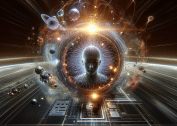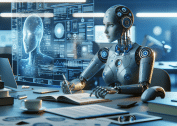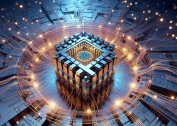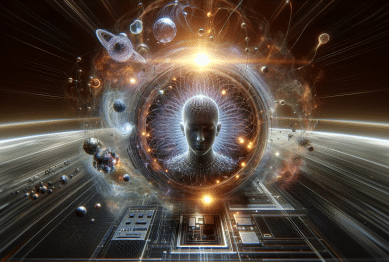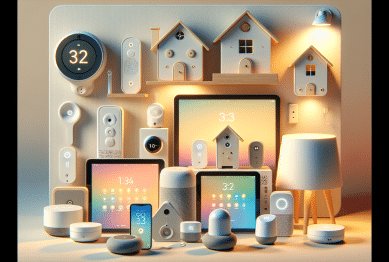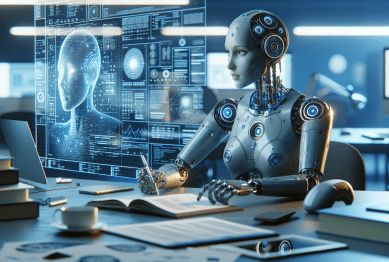Artificial intelligence is quietly reshaping how people work, live, and solve problems. This guide explores impactful examples of AI in daily life, from smart assistants to personalized online experiences, safety, health, and learning—revealing new trends and hidden benefits that many overlook.
Smart Assistants and Homes: Daily Tasks Made Easier
Smart assistants, such as those built into smartphones and speakers, are making complex tasks seem effortless. These AI-powered helpers manage appointments, answer questions, play music, and even control home devices—all through simple voice commands. Many households use AI to automate lighting, set reminders, and streamline morning routines. The underlying technology relies on natural language processing, machine learning, and cloud computing, working together to understand and adapt to requests with growing accuracy. For families, smart homes provide not just convenience but a sense of control over the environment, allowing for energy savings and improved accessibility. This seamless integration of AI is redefining what it means to interact with home technology.
Beyond scheduling and information, smart assistants help people monitor daily habits. With interconnected devices, AI can track energy usage patterns and recommend changes that decrease utility bills or support environmental goals. Some systems integrate with home security, giving real-time alerts or recognizing unusual activity using image recognition algorithms. The blend of automation and artificial intelligence thus fosters safer, more efficient living spaces. As these technologies advance, they become more intuitive, learning from behavior patterns and making personalized suggestions.
Adoption of smart home tech has made AI-driven living accessible to diverse populations, including those with mobility impairments or vision loss. Voice-activated AI assistants, for example, can provide spoken weather reports, read messages aloud, or control smart locks and thermostats. This combination of convenience and inclusivity showcases the broad societal benefits of artificial intelligence in everyday environments, setting the stage for even richer and more supportive interactions in the future (Source: https://www.nist.gov/blogs/taking-measure/what-makes-smart-home-smart).
AI in Healthcare: Enhanced Diagnosis and Personalization
Artificial intelligence has transformed healthcare, often behind the scenes. Advanced algorithms now support doctors during diagnostics, scanning x-rays, and reading MRI images with precision. AI-based tools have shown the ability to detect certain conditions earlier than traditional methods. For patients, this can mean faster treatment, improved accuracy, and potentially better outcomes. The role of AI extends to administrative tasks too, helping healthcare teams organize patient records and manage appointments smoothly. These enhancements enable medical professionals to focus more on human connection and care, while machines handle repetitive analysis and reporting (Source: https://www.fda.gov/medical-devices/software-medical-device-samd/artificial-intelligence-and-machine-learning-medical-devices).
Some AI-driven applications offer personalized recommendations for wellness, fitness, or medication management. Wearable devices with embedded sensors track heart rates, sleep, and physical activity, generating health insights through algorithms. These systems can prompt users to exercise, hydrate, or rest, while flagging patterns that may indicate risk factors. The continuous health data collected by these devices helps people make informed choices for long-term wellbeing. AI also powers chatbots that answer health questions or triage symptoms, connecting users to relevant resources or professionals when needed.
AI-driven research accelerates medical discoveries, identifying links between genes and diseases and predicting treatment effectiveness. For those seeking new therapies, AI helps match patients to clinical trials or personalized care plans. This technology levels the playing field, offering advanced diagnostics and decision support beyond major urban centers. As trust and understanding of AI grow in healthcare, so too do the opportunities for earlier intervention and more holistic care (Source: https://www.nih.gov/news-events/nih-research-matters/artificial-intelligence-helps-spot-cancer-early).
Personalized Online Experiences: Shopping, Streaming, and More
Artificial intelligence powers many digital experiences that seem tailored to individual preferences. From shopping recommendations to music playlists, AI algorithms analyze previous behavior, searches, and interactions to predict what someone might enjoy next. Video streaming platforms use machine learning to curate watchlists and suggest movies, reducing the time users spend searching for content. E-commerce websites personalize product suggestions and even adjust site layouts dynamically to reflect interests. This personalization is possible because AI continually learns from millions of data points, refining its suggestions over time (Source: https://www.nature.com/articles/nature.2016.20719).
In the background, AI engines work to optimize the digital user experience, from faster search results to chatbots that assist with troubleshooting or questions about products. These tools reduce frustration, offering seamless support around the clock. For businesses, AI insights into shopper behavior help refine inventory, pricing, and marketing strategies. Consumers may not always notice the invisible hand of AI, but it continually shapes the quality of their digital encounters—from what shows up on social media feeds to targeted ads tailored by browsing history.
Some users appreciate AI’s ability to surface content they otherwise might miss. For example, translation tools powered by AI help break down language barriers, making online learning or global connections more accessible. While privacy and data use remain important considerations, ongoing advances in artificial intelligence offer more customized, enjoyable, and productive online engagements, setting a foundation for even smarter algorithms in the future.
Safety, Security, and Ethical Considerations
The rise of AI in daily life has transformed safety and security protocols for both individuals and organizations. Machine learning algorithms now detect fraud, monitor cyber threats, and guard against suspicious account access. Many banks use AI-powered systems to watch for unusual transactions, alerting customers and freezing accounts if necessary. Video surveillance technology leverages facial recognition and behavioral analyses to enhance protection in public and private spaces, aiming to prevent incidents before they escalate.
However, with powerful AI systems come ethical challenges, especially concerning privacy, bias, and accountability. The data required to train artificial intelligence models is sometimes sensitive or personal. It’s crucial to design transparent AI, clarify how systems reach decisions, and ensure fairness in their outcomes. Organizations and researchers are increasingly focused on building safeguards against discrimination or misuse. Regulations and international guidelines evolve alongside technology to promote responsible development and encourage trust (Source: https://www.cdc.gov/niosh/topics/ai/default.html).
Public awareness of AI’s impact on safety is growing. Educational campaigns and transparent communication help set realistic expectations for how artificial intelligence works and what users can do to protect themselves. The future promises more robust privacy controls and cooperation between technology providers, regulators, and users. By fostering a culture of responsible AI adoption, communities benefit from enhanced security and ethical progress without sacrificing individual freedoms.
Learning and Creativity: AI as a Collaborative Tool
Artificial intelligence is becoming an invaluable tool for both formal education and lifelong learning. Educational platforms use adaptive algorithms to tailor lessons, quizzes, and activities to each student’s pace and strengths. This personal approach enables better retention, engagement, and motivation. AI also assists teachers by automating grading, identifying students who might need extra help, and flagging trends in classroom participation. Such innovations help level the playing field for learners from a range of backgrounds (Source: https://www.edsurge.com/news/2023-04-30-how-artificial-intelligence-is-changing-education).
In creative fields, AI-generated art, music, and literature inspire new collaborations. Authors use AI-powered editors to refine their work, while musicians blend traditional techniques with algorithmic compositions. Designers turn to machine learning for novel patterns or visual effects. The relationship is not purely digital—human intuition and creativity still guide the process. Rather, AI acts as a supportive partner, suggesting ideas, building mood boards, or automating repetitive steps. These possibilities expand creative horizons and foster innovation across industries.
Open-source AI platforms and free online courses make advanced skills accessible to anyone with internet access. These tools allow for hands-on experiments, competitions, and project-based learning without high barriers to entry. With proper guidance, people can use AI to create solutions for social good, environmental challenges, or personal growth, demonstrating that artificial intelligence is not just a trend but a long-term ally for human development and creative achievement (Source: https://ocw.mit.edu/courses/find-by-topic/#cat=engineering&subcat=artificialintelligence).
The Future of AI: Work, Play, and Daily Living
Looking ahead, artificial intelligence is poised to touch even more aspects of daily life. In the workplace, AI tools automate repetitive tasks, support complex decision-making, and help manage time or project workflows. These advances can free workers to focus on creative efforts, strategy, or personal connection. Across entertainment and leisure, AI will personalize games, sports analytics, and even travel planning, shaping unique user journeys and memories. The diversity of impact remains impressive and ever-growing.
AI-driven transportation is one frontier to watch closely. From self-parking vehicles to real-time transit updates, these technologies help individuals get around more safely and efficiently. Cities explore the power of machine learning to optimize energy use, predict maintenance needs, and even improve air quality. The evolution of wearable AI, robotics, and smart devices drives integration into health, communication, and social life. As artificial intelligence becomes more visible, opportunities for user input, customization, and learning will also grow.
The ultimate goal is not to replace humans but to enhance experiences and opportunities in meaningful ways. By staying informed about AI’s potential and limits, people can harness these tools thoughtfully and responsibly. When combined with ethical development, community dialogue, and consideration for all users, AI promises a future rich in possibilities, built on curiosity, respect, and innovation for everyone (Source: https://www.brookings.edu/research/what-is-artificial-intelligence/).
References
1. National Institute of Standards and Technology. (n.d.). What Makes a Smart Home ‘Smart’? Retrieved from https://www.nist.gov/blogs/taking-measure/what-makes-smart-home-smart
2. U.S. Food and Drug Administration. (n.d.). Artificial Intelligence and Machine Learning in Medical Devices. Retrieved from https://www.fda.gov/medical-devices/software-medical-device-samd/artificial-intelligence-and-machine-learning-medical-devices
3. National Institutes of Health. (n.d.). Artificial Intelligence Helps Spot Cancer Early. Retrieved from https://www.nih.gov/news-events/nih-research-matters/artificial-intelligence-helps-spot-cancer-early
4. Nature News. (2016). The Many Roles of Artificial Intelligence in Everyday Life. Retrieved from https://www.nature.com/articles/nature.2016.20719
5. Centers for Disease Control and Prevention. (n.d.). Artificial Intelligence (AI) in the Workplace. Retrieved from https://www.cdc.gov/niosh/topics/ai/default.html
6. EdSurge. (2023). How Artificial Intelligence is Changing Education. Retrieved from https://www.edsurge.com/news/2023-04-30-how-artificial-intelligence-is-changing-education

